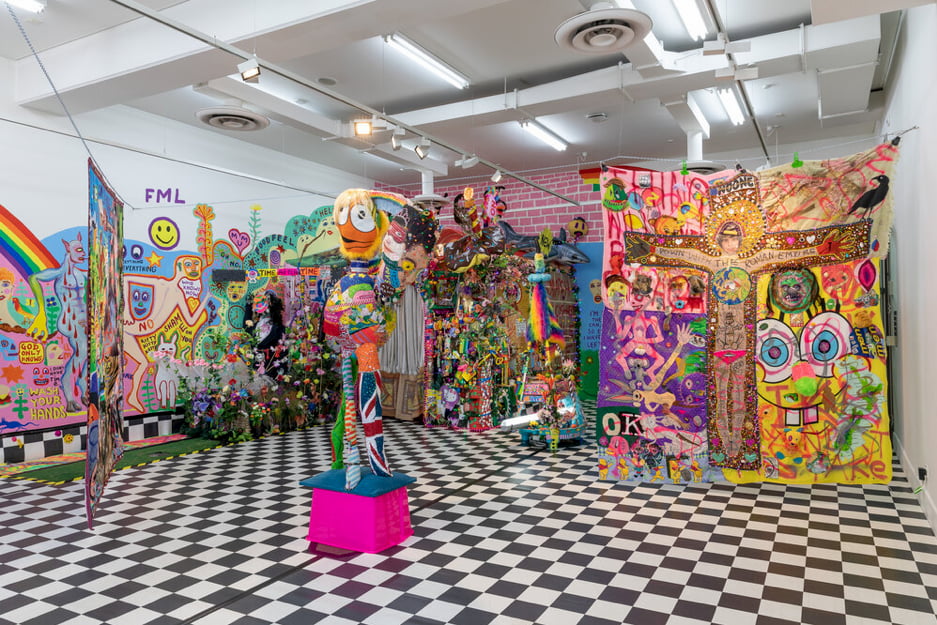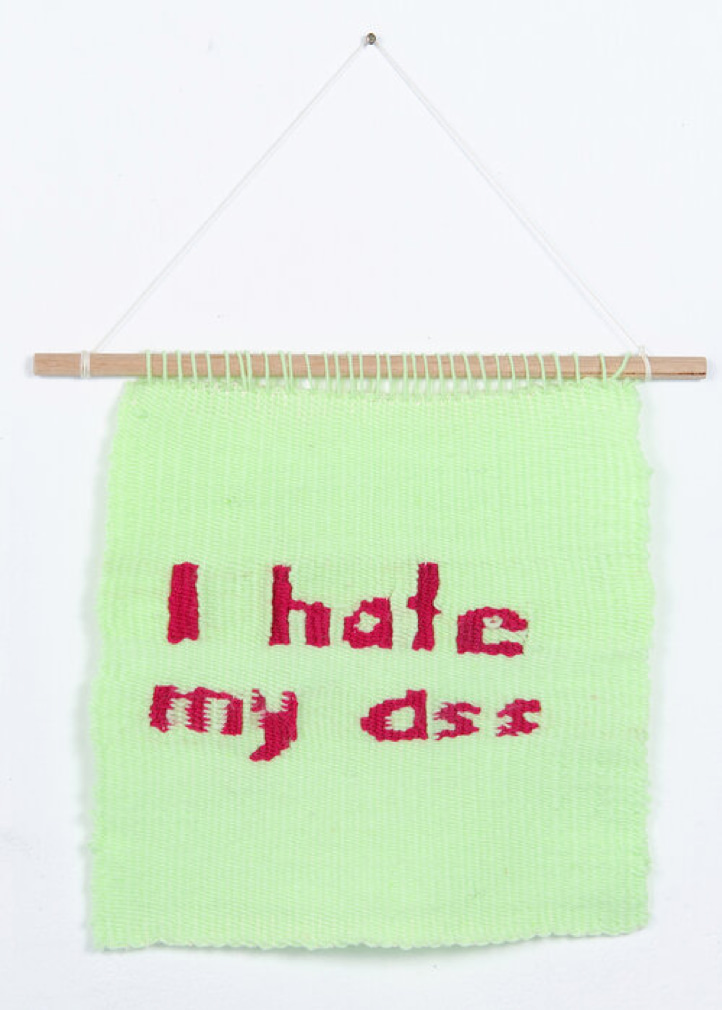
Culture Quiz: Intersect
Intersect is a particularly diverse section of RMIT Culture, acting as a conduit to connect the University’s students, staff and research into the broader global arts community.
Intersect manages six creative project streams which work together to celebrate and nurture contemporary visual art practice-based research.
Quiz
1. RMIT Intersect and its multi-disciplinary projects encompass the ethos of RMIT, RMIT Culture and Melbourne more broadly. Intersect manages 6 creative projects that together form a dynamic program of exhibitions, residencies, creative laboratories and critical discussion. Can you name these projects?
Intersect’s three gallery spaces are: Project Space, Spare Room and Site Eight; its residency program is Situate; its public art project is Lightscapes, and its talks program is called Speaker.
2. Which artist and RMIT alumnus spoke about their practice and processes in a 2017 Speaker presentation? Hint: their 2013 artwork (pictured) shares a title with a Pat Benatar love ballad.

Penny Byrne, a Melbourne-based artist who uses multiple mediums to create interesting, politically charged and humorous sculptures. Check out Byrne’s Speaker talk online. The title of the pictured work is Love Is A Battlefield.
Image: Penny Byrne
Love is a Battlefield (detail), 2013
Bronze with Satin Black Patina
1000 x 700 x 700 mm
3. In September of this year, Intersect announced a partnership with which multi-city law firm?
Hall & Willcox. The firm is working with RMIT students and graduates to showcase and exhibit their pieces throughout their Melbourne office.
4. The creative industries are among some of the hardest hit by the pandemic but Intersect has kept up to date with the programmed artists whose exhibitions were cancelled by reaching out to them for creative updates. Which artist was up first?
Josh Peters. His exhibition, Camouflages, explores the manipulation that sound can have over the listeners perception. Peters’ exhibition has been postponed due to the COVID-19 pandemic. In May 2020, Peters was successful in his request for project support from the City of Melbourne to develop the work for this exhibition.
5. On September 16, we celebrated the 10th anniversary of Ask A Curator day. Which Intersect staff member lent their thoughts to the public’s questions?
Andy Tetzlaff, Intersect’s coordinator. As mentioned in his introductory post to RMIT Intersect’s Instagram, Andy has over 12 years of experience facilitating and curating various projects – who better to answer these questions? Check out the questions and answers at Intersect’s Instagram.
6. One of Australia’s most exciting contemporary artists, Paul Yore, presented a new site-specific installation at Project Space / Spare Room galleries earlier this year. What was the inspiration for Yore’s exhibition titled Pleasures Against Nature?

The title of the exhibition and its content draws inspiration from the condemnation of gay sex throughout the 18th and 19th centuries. Yore’s art comprises multiple mediums to bring together and portray the unapologetic expression of queer identity. Read more about Yore and Pleasures Against Nature online.
Image: Paul Yore
Pleasures Against Nature, 2020
Exhibition installation view at PROJECT SPACE/SPARE ROOM Galleries
Photography by Mark Ashkanasy
7. ‘Three countries, three different languages at least three cultures come together in this particular playground’ is part of a quote by Julie Ewington on the 2017 exhibition ‘Minegishi / Britton / Bielander’. Can you name the three different countries Ewington is referring to? (Hint: they are famous for chocolate; kangaroos; and sushi.)
David Bielander of Switzerland, Helen Britton of Australia, and Yutaka Minegishi of Japan. Each artist shares the love of jewellery and have been working together in Munich for almost two decades. This exhibition draws together their distinct practices and backgrounds. More information on ‘Minegishi / Britton / Bielander’ can be found online.
8. Lightscapes is a public art project that connects to the very fabric of the city – enriching, critiquing and reconsidering notions of audience, site and public space through art. Where can you find Lightscapes?

Lightscapes is comprised of 14 light boxes fixed to building facades across RMIT and Melbourne Central. Although this year’s exhibitions have been cut short due to the pandemic, highlights from Intersect can be found online year round.
Image: Lauren V Morehouse
I Hate My Ass, 2019
Digital print on acrylic
- PEG
Acknowledgement of Country
RMIT University acknowledges the people of the Woi wurrung and Boon wurrung language groups of the eastern Kulin Nation on whose unceded lands we conduct the business of the University. RMIT University respectfully acknowledges their Ancestors and Elders, past and present. RMIT also acknowledges the Traditional Custodians and their Ancestors of the lands and waters across Australia where we conduct our business - Artwork 'Sentient' by Hollie Johnson, Gunaikurnai and Monero Ngarigo.